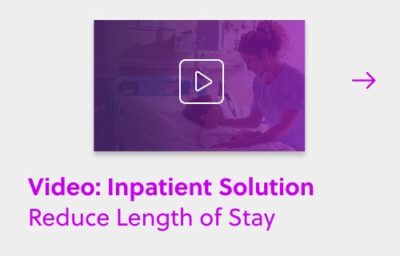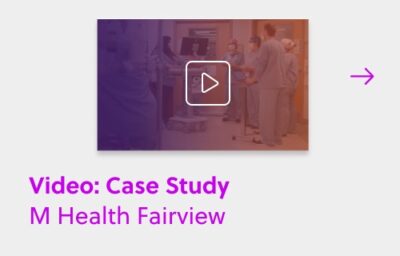Operating rooms are some of a hospital system’s most valuable – and expensive – resources. On average, ORs account for 50% or more of a hospital revenue, and they cost upwards of $40 per minute to operate on average (even more by some estimates). Efficiently using available operating rooms is a critical component for increasing hospital revenue, reducing waste, and providing quality care for patients.
While health systems understand the importance of optimizing OR utilization, actually improving utilization rates and efficiently scheduling OR time continues to be a challenge. One reason for this is it is difficult to accurately predict how long a case is going to take, which has significant implications on scheduling. Schedulers need to estimate how long each case in a day is going to take in order to allocate resources properly. If case length is overestimated, it results in underutilized OR space and significant lost revenue. If case length is underestimated, it leads to scheduling delays or cancellations – which can harm patient care, frustrate team members and patients, and create last-minute scrambles to try to rearrange cases and prevent additional delays. Typically, OR schedulers do not have access to the information they need to accurately predict case length, and are dependent on using historical averages to make their best estimate.
The Problem with Relying Only on Average Case Length and Manual Scheduling
While they are a good starting point, historical averages alone are not enough to accurately estimate case length.
Outliers can result in misleading estimates. If one procedure takes exceptionally long due to a complication or equipment malfunction, any future estimates based on this data will likely overestimate case duration unless these anomalies are taken into account.
Many factors impact case length. Even if outliers are not skewing the data, there are too many factors at play for each case to make predictions based solely on average case length. Some examples of factors that can impact case length include: the clinician(s) performing the procedure, the specific OR in which the procedure is taking place, the time of day, and recent trends in case length for a specific procedure type.
Asking a human scheduler to remove outliers and try to comb through all available data for each case is not realistic. But this type of task is perfect for a machine learning algorithm.
How Machine Learning Can Improve Case Length Prediction Accuracy
Machine learning models are a great solution for this type of challenge because once they are trained, they can quickly analyze large, complex datasets which humans cannot. By training a model on datasets with multiple input variables and a single output variable – commonly known as “supervised learning” – the model learns which factors have the greatest impact on the output, and are able to analyze future inputs to predict outputs with increased accuracy. In this case, the inputs are data points relating to each OR case, and the output is the length of each case.
At Qventus, we have developed a machine learning model, the Case Length Adjustment Tool (CLAT), which generates case length predictions based on a hospital or healthcare system’s own data. It considers inputs like:
- The type of case
- The hospital and specific OR in which the case is being performed
- The clinician(s) involved
- Seasonality
- Time of day
- Trends in a surgeon’s time performing the same operation.
The system also automatically identifies and removes outliers when calculating estimates.
The result is a more precise estimate of how long each case will take. CLAT then compares its findings to the posted schedules for individual ORs. If it finds that there is sufficient variance between its model and the schedule, it automatically emails the OR scheduler with a list of cases to adjust and the expected impact of making those adjustments. By providing these recommendations, CLAT helps the scheduler be more informed and make more accurate decisions.
A Real Life Example
Before launching CLAT, we tested it by performing a retrospective analysis at a healthcare system. Using the system’s OR data from August 2022 through February 2023, we compared the scheduled time of cases, the actual time they took, and the time estimated by CLAT.
We found that the error between scheduled and actual time was 30%, while the error between scheduled and CLAT-estimated time was 15%. The scheduled length was an average of 39 minutes shorter, while the CLAT-estimated time was an average of 20 minutes shorter. An average of 74 minutes per day was incorrectly scheduled. Using CLAT would have saved this system a total of 3,754 minutes (62.6 hours) over the period of the test.
Here’s how that translates into revenue for the participating hospital system over the duration of the test period:
- Cost of running OR = $43/minute
- Lost revenue for unused OR time = $63/minute
- Total savings for overrun time saved = $145,641
- Total savings for unused OR time = $29,738
- Total potential savings by implementing CLAT = $175,377
On the strength of the analysis, the hospital began a pilot program with CLAT and has since adopted and is using it to adjust case lengths. They’ve realized benefits including:
- Savings from fewer over- and underutilized ORs
- OR team members are happier due to less overtime and downtime
- Surgeons have a better sense of their schedules and the opportunity to add cases if adjustments lead to open time
By leveraging a machine learning model, health systems can improve accuracy in case length estimation and maximize the use and efficiency of their ORs, resulting in increased revenue, reduced costs, and more satisfied surgeons, staff, and patients. This is one example of how your operations can be improved by being more strategic about how you leverage data that is already being collected in your EHR and other systems. If you’re interested in learning more about Qventus’ Perioperative Solution and the CLAT feature, let’s chat.


